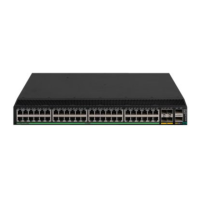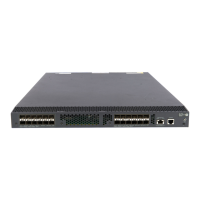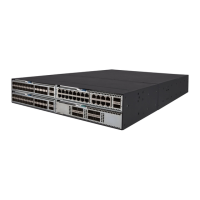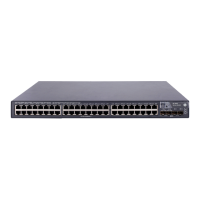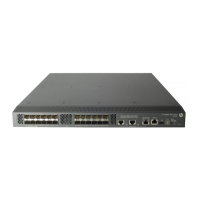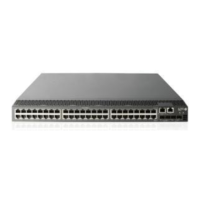54
• Exponent used for average queue size calculation—The bigger the exponent is, the less sensitive
the average queue size is to real-time queue size changes. The average queue size is calculated
using the formula: average queue size = previous average queue size × (1-2
-n
) + current queue size
× 2
-n
, where n can be configured with the qos wred weighting-constant command.
• Numerator for drop probability calculation in percentage—The larger the value is, the greater the
drop probability is.
A WRED table can be applied to multiple interfaces. For a WRED table already applied to an interface,
you can modify the values of the WRED table, but you cannot remove the WRED table.
To configure and apply a WRED table:
Ste
Command
Remarks
1. Enter system view.
system-view N/A
2. Create a WRED table
and enter its view.
qos wred queue table table-name N/A
3. (Optional.) Set the
WRED exponent for
average queue size
calculation.
queue queue-value weighting-constant
exponent
The default setting is 9.
4. (Optional.) Configure
the other WRED
parameters.
queue queue-value [ drop-level drop-level ]
low-limit low-limit high-limit high-limit
[ discard-probability discard-prob ]
By default, low-limit is 100,
high-limit is 1000, and
discard-prob is 10.
5. (Optional.) Enable ECN
for a queue.
queue queue-value ecn
By default, ECN is not enabled
on any queue.
6. Enter interface view.
interface interface-type interface-number N/A
7. Apply the WRED table
to the interface.
qos wred apply [ table-name ]
By default, no WRED table is
applied to an interface, and the
tail drop is used on an interface.
Displaying and maintaining WRED
Execute display commands in any view.
Task Command
Display WRED configuration information on the
interface or all interfaces.
display qos wred interface [ interface-type
interface-number ]
Display configuration information about a
WRED table or all WRED tables.
display qos wred table [ name table-name ] [ slot
slot-number ]
WRED configuration example
Network requirements
Apply a WRED table to interface Ten-GigabitEthernet 1/0/2, so that the packets are dropped as follows
when congestion occurs:

